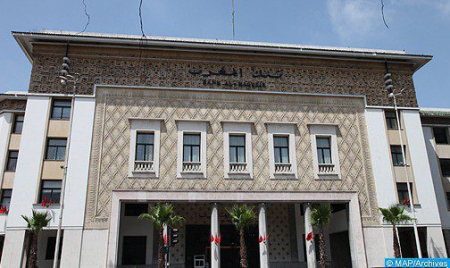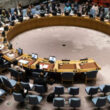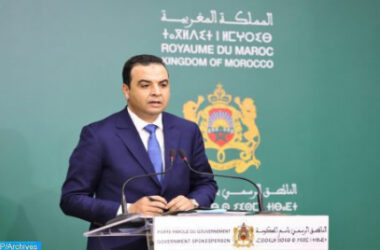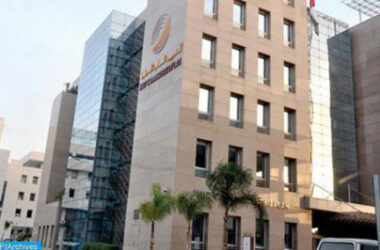“To forestall any de-anchoring of inflation expectations and to guarantee the conditions for a rapid return to levels in line with the price stability objective, the Board decided to raise the key interest rate by 50 basis points to 2%and to continue to monitor closely the economic developments, both nationally and internationally, and in particular, the evolution of inflationary pressures,” said BAM in a statement issued at the end of its board’s 2022 third quarterly meeting.
During this meeting, the Board analyzed the international economic developments and noted that they remain deeply marked by the aftermath of the pandemic and the implications of the war in Ukraine, namely through the persistence of higher energy and food prices, as well as supply chains disruptions.
These developments are driving inflation to exceptionally high levels, leading central banks to reinforce the rapid and largely synchronized tightening of their monetary policies, entailing a significant slowdown in the global economy after the rebound marked in 2021.
At the domestic level, the Board noted that the economy continues to suffer from this unfavorable external environment and the repercussions of a particularly severe drought, along with a pronounced deceleration in growth and a sharp acceleration in inflation, which continues to be fueled by external pressures. However, the latest available data show a broad spread to non-tradable products prices, the statement said.
Compared to its June forecasts, Bank Al-Maghrib is expecting a significantly higher level of inflation in 2022 (6.3%), followed by a less pronounced downturn in 2023 (2.4%).
According to Bank Al-Maghrib’s projections, economic growth will slow down markedly to 0.8% this year, as a result of a 14.7% decline in agricultural value added and a slowdown to 3.4% of the growth pace of non-agricultural activities.
In 2023, it would accelerate to 3.6%, linked to the projected 11.9% increase in agricultural value added, under the assumption of a return to an average cereal production of 75 million quintals. However, non-agricultural activities would continue to slow, with their pace returning to 2.5%.
As regards external accounts, the strong trade dynamic is expected to continue this year with an increase in exports by 34%, driven mainly by sales of phosphate and derivatives, which would reach 144.5 billion dirhams, and of the automotive sector, which would amount to nearly 100 billion. In 2023, exports are projected to decline by 1.1%, with a relative decrease in phosphate and derivatives prices.
Concurrently, imports are expected to rise by 34.5 percent in 2022, due to the increase in the energy bill to 135.1 billion dirhams and the increase in purchases of semi-finished products to 167 billion. In 2023, they would decline by 4.6 percent, mainly due to the expected drops in oil prices and wheat supplies.
Travel receipts, benefiting from the reopening of borders and the significant decline in the pandemic worldwide, are expected to improve significantly to 79.8 billion dirhams this year and to stabilize at this level in 2023.
Taking into consideration the performance recorded since the beginning of the year, remittances are expected to continue to rise, totaling around 100 billion dirhams for the year as a whole before returning to 92.4 billion in 2023, BAM says.
Under these conditions, the current account deficit would be equivalent to 3.2% of GDP in 2022 before narrowing to 1.9% in 2023. Regarding FDI, revenues would amount to about 3.2% of GDP annually over the next two years.
Overall, and assuming in particular the fulfilment of the external financing forecasts of the Treasury, the official assets of reserves would stand at 343.7 billion dirhams at the end of 2022 and 360.7 billion dirhams at the end of 2023, thus ensuring a cover of approximately 6 months of imports of goods and services.
As to monetary conditions, the strong appreciation of the dollar against the euro is reflected in the nominal effective exchange rate of the dirham. After an increase of 2.1% in 2021, the latter is expected to slightly decline over the year as a whole before appreciating by 1.7%in 2023.
Considering the lower levels of domestic inflation compared to partner and competitor countries, this rate will depreciate in real terms by 1.8% in 2022 before increasing by 0.4% in 2023.
On the same note, the quarterly assessments conducted by Bank Al-Maghrib continue to show the absence of signs of misalignment of the dirham with the fundamentals of the national economy.
Lending rates were broadly unchanged in the second quarter of 2022, covering an 18 basis point decline in consumer loans and increases of 29 bp in equipment loans and 30 bp in real estate loans to companies.
As for the banks’ liquidity needs, they would increase to 85.1 billion dirhams at the end of 2022 and to 89.6 billion at the end of 2023. Bank credit to the non-financial sector would increase by 4% in 2022 and by 3.6% in 2023.
Regarding public finance, fiscal execution for the first eight months of the year shows a 24.5 percent improvement in ordinary revenue. At the same time, overall expenses increased by 13.1%, reflecting in particular the increase in compensation costs.
Taking into account the expected increase in tax revenues, the mobilization of resources under specific financing as well as the expected evolution of the subsidy costs, the fiscal deficit would, according to Bank Al-Maghrib’s projections, increase from 5.9% of GDP in 2021 to 5.5% in 2022 before decreasing to 5% in 2023.










